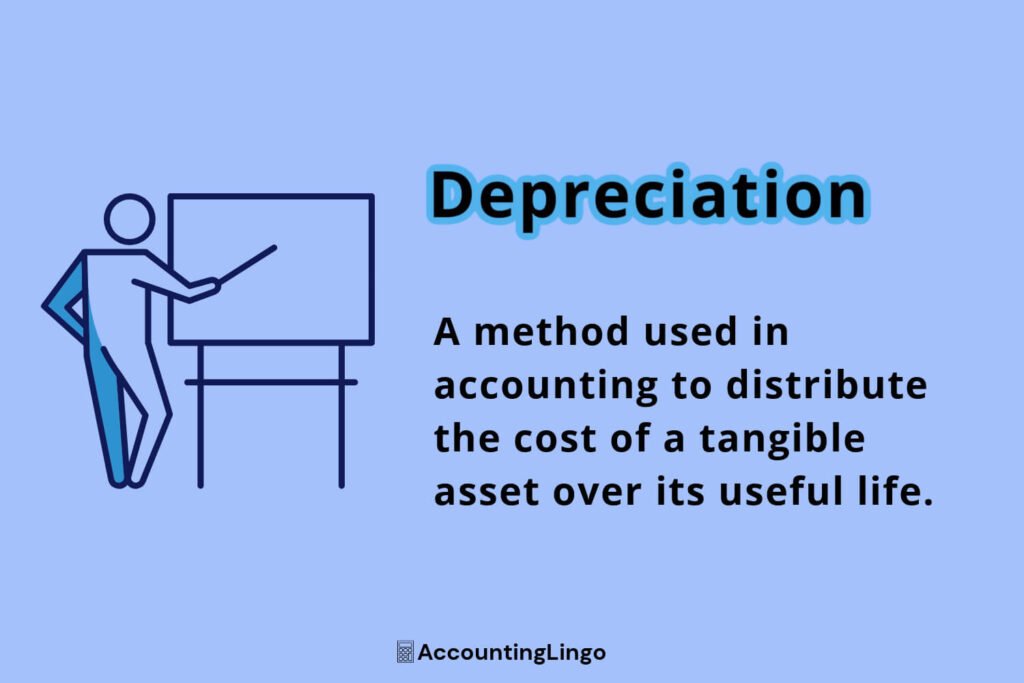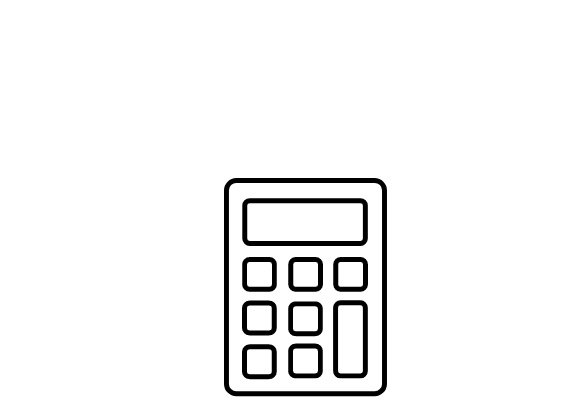
Understanding Which Assets Cannot Be Depreciated
The world of asset depreciation can be confusing and complex, filled with jargon and technicalities that can leave even the most experienced business owners scratching their heads. In this article, we’ll dive deep into assets that cannot be depreciated while explaining the rules and regulations surrounding them.
From land to intangible asset investments like patents and trademarks, we’ll explore the different categories of non-depreciable assets and explain why they’re exempt from depreciation. Whether you’re a business owner looking to optimize your tax strategy or simply curious about the world of asset management; let’s begin our journey.
Which Assets Can be Depreciated?
Before we explore the world of non-depreciable assets, let’s first clarify which assets can be depreciated. Depreciation is the gradual reduction of an asset’s value over time due to normal wear and tear, obsolescence, or other common factors. A company’s financial statements reflect this reduction in value as an expense.
Depreciable assets commonly include tangible assets such as buildings, vehicles, machinery, and equipment. These assets have a limited useful life and can be quantifiably measured regarding their depreciation. For instance, a company may buy a delivery truck that will last for 10 years. Each year, the company can deduct a portion of the truck’s initial cost as an expense on their tax returns.
However, it’s important to note that not all tangible assets can be depreciated. Assets such as land and specific improvements to land, like landscaping or parking lots, are not subject to depreciation. Since land has an unlimited useful life, its value typically increases with time.
The Concept of Depreciable Assets
To fully grasp the concept of depreciable assets, it’s essential to understand how depreciation is calculated. There are several methods for calculating depreciation. The most common being the straight-line method, the declining balance method, and the units of production method.
- The straight-line method is the simplest and most commonly used method. It evenly distributes the cost of the asset over its useful life. For example, if a company buys a machine for $10,000 and expects to use it for 5 years, they can deduct $2,000 ($10,000 divided by 5) each year as a depreciation expense.
- The declining balance method allows for a higher depreciation expense in the early years of an asset’s life and gradually decreases it over time. This method is often used for investments with higher obsolescence or wear and tear rate in the early years.
- The units of production method calculates depreciation based on the asset’s usage or output. This method is commonly used for assets such as vehicles or machinery directly tied to production levels. The depreciation expense is determined by dividing the asset’s total cost by its total estimated production or usage.
Examples of Depreciable Assets
Let’s look at some examples to understand the concept of depreciable assets better.
Imagine a manufacturing business that purchases new machinery for its production line. The machinery has an expected useful life of 10 years and a salvage value of $5,000. Using the straight-line method, the business can calculate the annual depreciation expense by subtracting the salvage value from the initial cost and dividing that by the useful life.
Let’s say the equipment costs $100,000. The annual depreciation expense would be ($100,000 – $5,000) / 10 = $9,500. The company can deduct $9,500 yearly for 10 years as a depreciation expense.
In addition, if a construction company buys a building for $1,000,000 and expects it to last for 40 years, they can deduct $25,000 ($1,000,000 divided by 40) each year as a depreciation expense.
These examples illustrate how depreciable assets can help businesses accurately account for the decline in value of their assets over time, providing a more accurate representation of their financial position.
Which Assets Cannot be Depreciated?
Now that we understand assets that can be depreciated, let’s explore the world of assets that cannot be depreciated. Non-depreciable assets do not qualify to take the depreciation deduction for various reasons. These assets typically have an indefinite useful life, or their value increases over time.
One example of a non-depreciable asset is land. Due to its unlimited useful life, land is a tangible asset that is not subject to depreciation. Unlike buildings or equipment, land does not wear out or become obsolete over time. In fact, land often appreciates, making it a valuable long-term investment for businesses and individuals.
In addition, specific improvements to land, such as landscaping or parking lots, are also considered non-depreciable. While improvements often have a limited useful life, they are commonly ineligible to be depreciated.
Another category of non-depreciable assets include stock, bonds, and mutual fund investments. These asset types are not subject to depreciation because their value fluctuates based on market conditions.
Lastly, intangible assets like patents, trademarks, and copyrights are also non-depreciable assets. These assets typically have an indefinite useful life. Their value is often associated with the exclusive rights they grant to the owner. While their value may change over time, it is not recognized through depreciation.
Assets That Cannot be Depreciated Explained
Non-depreciable assets play a crucial role in businesses’ financial planning and tax strategy. By understanding which assets do not qualify for the depreciation expense deduction, business owners can more accurately assess their financial position and improve their tax planning.
Non-depreciable assets are not subject to depreciation because they have a different nature and purpose than depreciable assets. While depreciable assets are used in producing or providing goods and services, non-depreciable assets are commonly held for the long term and utilized for investment or intellectual property purposes.
For instance, a manufacturing company may buy a building and machinery to produce their products. Building and machinery are considered depreciable assets as they directly contribute to the company’s production activities. On the other hand, if the company invests in stocks or acquires a patent, these assets are considered non-depreciable. Aside from serving a different purpose, they are not directly related to the company’s production activities.
Misconceptions About Non-Depreciable Assets
Although non-depreciable assets may seem straightforward, there are a few misconceptions business owners should be aware of. A common misconception is that non-depreciable assets do not have any costs or expenses associated with them. While it’s true that non-depreciable assets are ineligible to qualify as a depreciation expense. They may still incur charges for maintenance, insurance, or licensing fees.
As an example, a company that owns a patent may be required to pay annual maintenance fees to keep the patent in force. In addition, a business that owns land may need to pay property tax, insurance premiums, or costs for maintenance and repairs. These costs must be factored into the financial planning and budgeting process, although they are not recognized as depreciation expenses.
An additional misconception is that non-depreciable assets cannot be utilized to generate income. Even though it’s true the value of non-depreciable assets are not recognized through depreciation, these assets can still generate income for a company. For example, a company owning land can lease it and earn rental income. Also, a firm with intellectual property rights can license those rights to other businesses and earn royalties.
Tax Implications of Non-Depreciable Assets
Understanding tax implications of non-depreciable assets is important for all companies. While non-depreciable assets are ineligible to take the depreciation expense deduction, they often have tax implications.
To illustrate this point, when a business sells a non-depreciable asset like land or stocks, it may be subject to the capital gains tax on profits. One must subtract the original purchase price from the selling price to calculate profit. Businesses should consult with tax professionals to ensure they fully understand all tax consequences of selling non-depreciable assets.
An additional tax consideration involves the use of non-depreciable assets for business purposes. In some cases, a company can deduct certain expenses associated with non-depreciable assets. For example, a business that owns land and operates a farm may be able to deduct expenses like fertilizer, seeds, and irrigation costs.
Strategies for Managing Non-Depreciable Assets
Although non-depreciable assets may not qualify for the depreciation expense deduction, they still require management to ensure they continue to provide value to a company. Strategies for managing non-depreciable assets include:
- Regular evaluation: Continuously analyze the value and performance of non-depreciable assets to ensure they align with stated business objectives. This includes keeping up on market conditions, conducting periodic appraisals, and staying current on law or regulation changes that may impact the value or use of these assets.
- Risk management: Enact strategies to protect non-depreciable assets from any potential threats or liabilities. This may include obtaining appropriate insurance coverage, implementing security measures, and conducting regular maintenance and inspections.
- Maximizing income potential: Explore opportunities to generate income from non-depreciable assets. This may involve leasing or renting assets, licensing intellectual property rights, or exploring joint venture partnerships.
- Tax planning: Work closely with tax professionals to maximize tax planning strategies. This includes understanding the tax implications of buying, selling, or using these assets for company purposes and taking advantage of any tax deductions or credits.
By implementing these strategies, companies can effectively manage their assets and ensure they continually contribute to the overall financial success of a business.
Depreciable and Non-Depreciable Assets for Financial Planning
In conclusion, understanding the difference between depreciable and non-depreciable assets is important for businesses and individuals alike. Depreciable assets, such as buildings and equipment, represent a gradual reduction in value over time and may qualify for the depreciation deduction. On the other hand, non-depreciable assets, such as land, is not subject to depreciation due to its indefinite useful life or appreciation in value.
By understanding which assets cannot be depreciated, businesses can more accurately assess their financial picture, improve their tax planning, and effectively manage their investments. Asset depreciation may be a complex subject, but with proper knowledge and understanding, one can navigate the topic successfully in order to make informed decisions.
Additional Resources
Other articles that may be helpful include:
What are Assets? Types, Examples
Accounting Principles: GAAP, IFRS
Understanding Liabilities: Types
